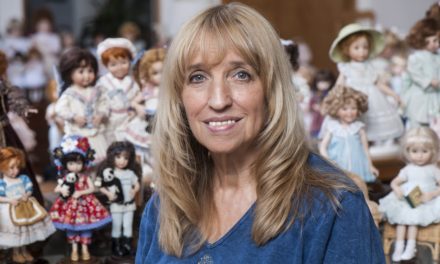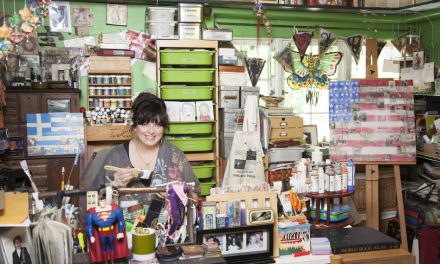By Jan Foulke
Q This doll has been in our family for many years. My mother just passed it down to me. I would like to know something about it. How old is it? Where was it made? Does it have any value to collectors? Can you help us?
A Your antique doll has a bisque head on a composition body. Bisque is unglazed porcelain. It’s breakable, so you must handle it carefully. Most dolls of this type were made in Germany, which had a large and profitable dollmaking industry in the Thuringia area, with hundreds of producers.
I can tell from the style that your doll’s head was made in the porcelain factory of Gebruder Heubach in the town of Licht. The Heubach brothers’ factory dated from the 1820s, when they produced tableware, figurines, and other porcelain novelties. They didn’t start to make doll heads until 1910. The heads they made are called character heads, because they were modeled to look like real children showing human emotions — smiling, laughing, crying, pouting — rather than the bland doll faces used until that time.
Your doll dates to the 1910 to 1920 decade. Gebruder Heubach was prolific, producing doll heads at all price levels, from economy to luxury items. The products were of excellent quality and are well-regarded by today’s collectors. Your doll’s composition body is a mixture of wood pulp, glue, sawdust, rags, and sundry other substances. Every factory had its own secret recipe for composition.

Photo courtesy of Foulke Archives
Gebruder Heubach was a porcelain factory and did not make complete dolls, except for all-bisque models. They sold heads to doll factories, which made the bodies, wigs, and clothes, and marketed the dolls. Unless the body is marked with a maker’s name, we do not know which factory produced it.
Your doll has some value. The bisque head must be perfect, with no cracks, chips, repairs, or cheek abrasions. The body must be in very good condition with the original finish and no complete repaint, but it may have some play wear and minor repairs. Your doll’s body is not the top quality from that time; it would have been more of an economy body. It is a plus for the doll to have the original factory shift, although it is also economy quality. A collector would expect to pay about $75 to $100 for this doll from a dealer at a doll show.
Jan Foulke (retired) is an authority on antique and vintage dolls, with over 40 years of experience in the field. She’s the author of the full-color reference book “Jan Foulke’s Guide to Dolls.” Subscribe now to read Foulke’s columns in DOLLS online archive of past issues!








